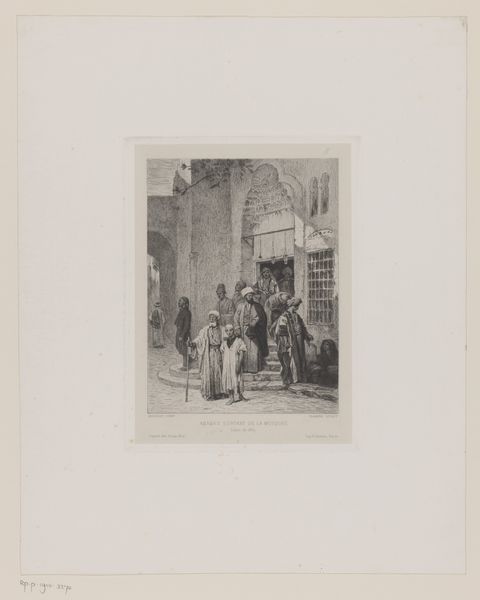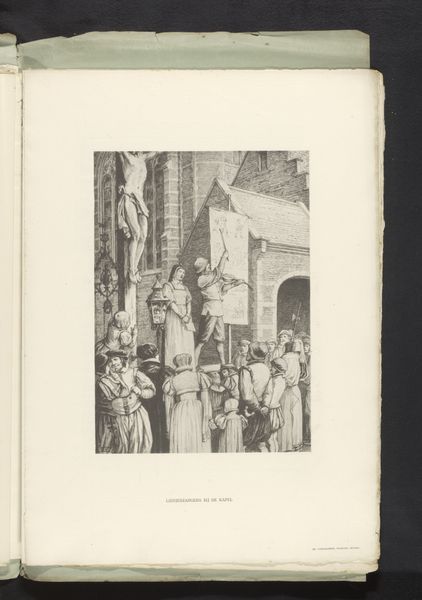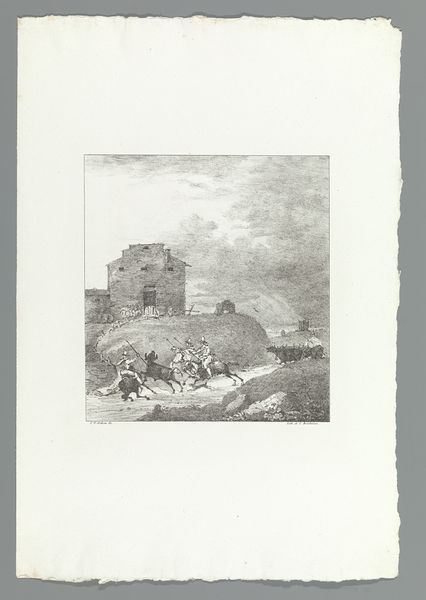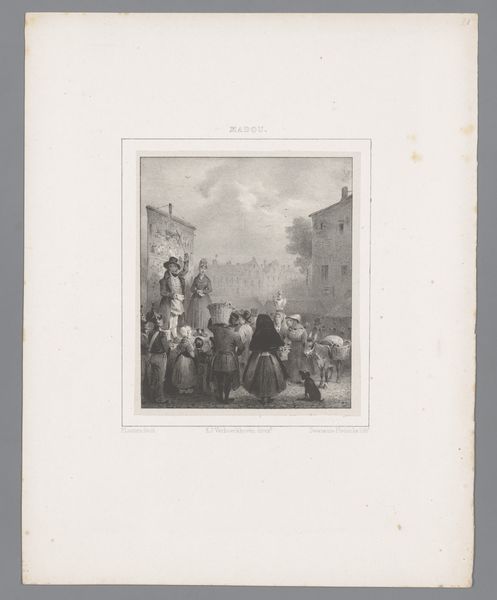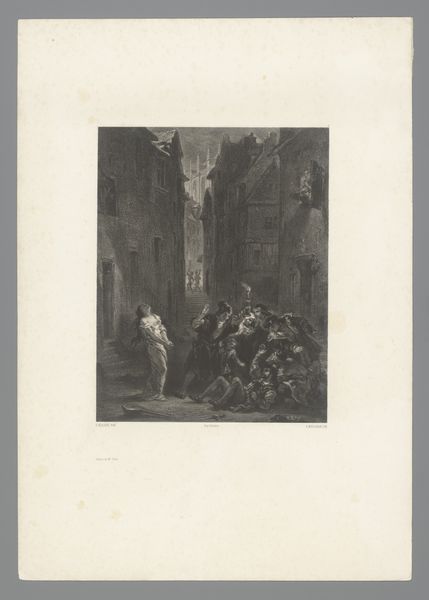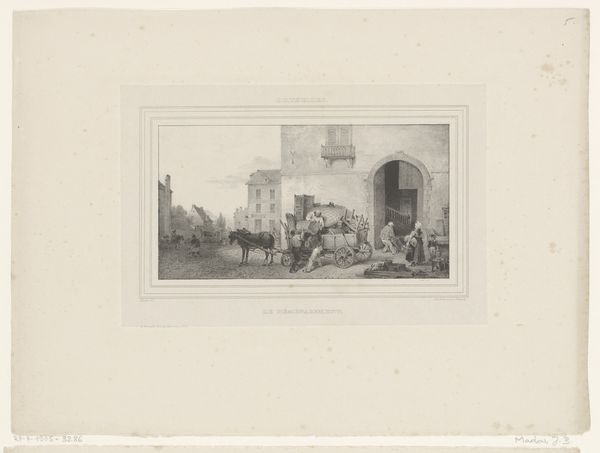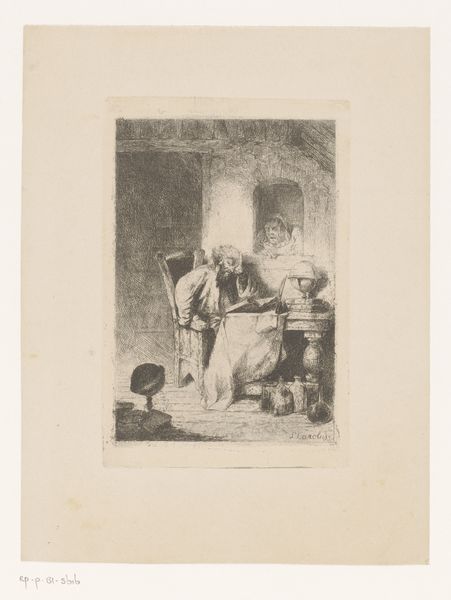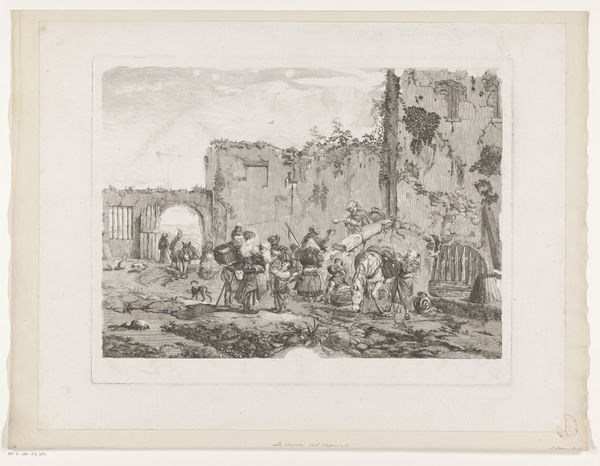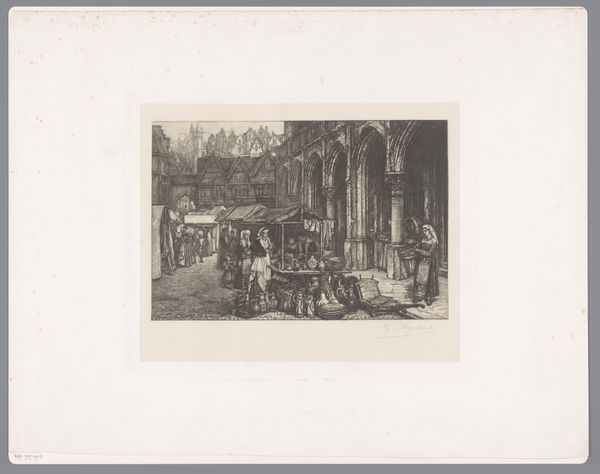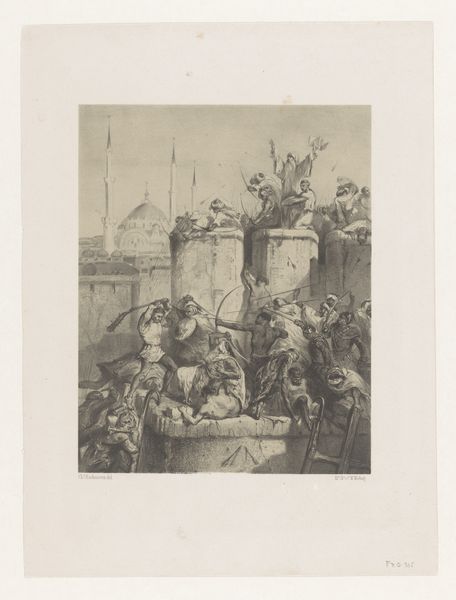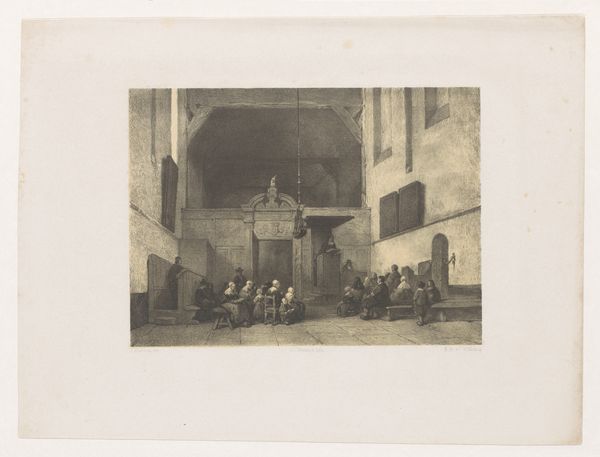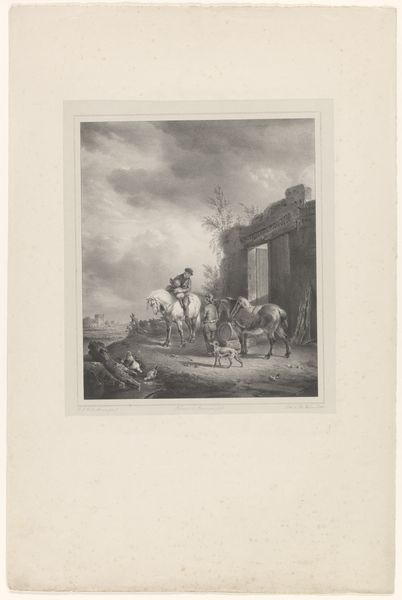
drawing, print, paper, ink
#
drawing
#
aged paper
#
narrative-art
# print
#
white palette
#
perspective
#
paper
#
ink
#
genre-painting
#
academic-art
#
repetition of white colour
Dimensions: height 370 mm, width 272 mm
Copyright: Rijks Museum: Open Domain
Curator: Looking at this image, I am immediately struck by its atmosphere of solemnity and introspection, amplified by the subtle contrast and aged quality of the paper. Editor: Indeed. This is "Kerkdienst," or "Church Service," by Carel Christiaan Antony Last, made sometime between 1837 and 1853. The Rijksmuseum houses this work, created with ink and print on paper. We see a scene of worship. Notice the raised pulpit, and how the congregation is situated within the church interior. The architectural structure dominating the scene would have necessitated significant manual labor in material extraction and construction. Curator: Precisely! That immense cylindrical pulpit, seemingly carved from stone or perhaps even brick, suggests the power dynamics at play within the religious structure. Think about the quarrying, transportation, and masonry involved! The means by which that object came into being really speaks to a centralization of resources and human effort. And how the layout encourages and displays those dynamics! Editor: Symbolically, the high pulpit, a light, towering structure in a building full of complex architecture, could represent the ascent to spiritual enlightenment through scripture and obedience to authority. I also note the repetition of whiteness in the dresses, walls, and paper; the impression that conveys! Notice too the people's clothing; it tells a whole story of community and cultural expectation. The narrative unfolds in details of attire and gesture. Curator: Fascinating. Now, regarding this "aged paper," its very presence here is vital to my point. What narratives were told to cause aging in the precise pattern displayed, over almost 200 years? How did atmospheric pressures impact ink adhesion? And what kind of life must it have lived for a portion of its backing to have entirely disintegrated in some sections? Editor: A worthy point to investigate! The marks of time are also traces of cultural memory and how we preserve stories. Together, this ink and paper and imagery weave together history, material reality, and intangible human experiences in shared religious space. It provides a fascinating view into Dutch life from that era. Curator: Absolutely! Focusing on these perspectives of craft, consumption, labor, material, and historical record allows us an entirely fresh viewpoint on its impact on society and ourselves. Editor: Yes. What we’re left with are some fascinating avenues of reflection. Hopefully, this piece leaves you all thinking.
Comments
No comments
Be the first to comment and join the conversation on the ultimate creative platform.
